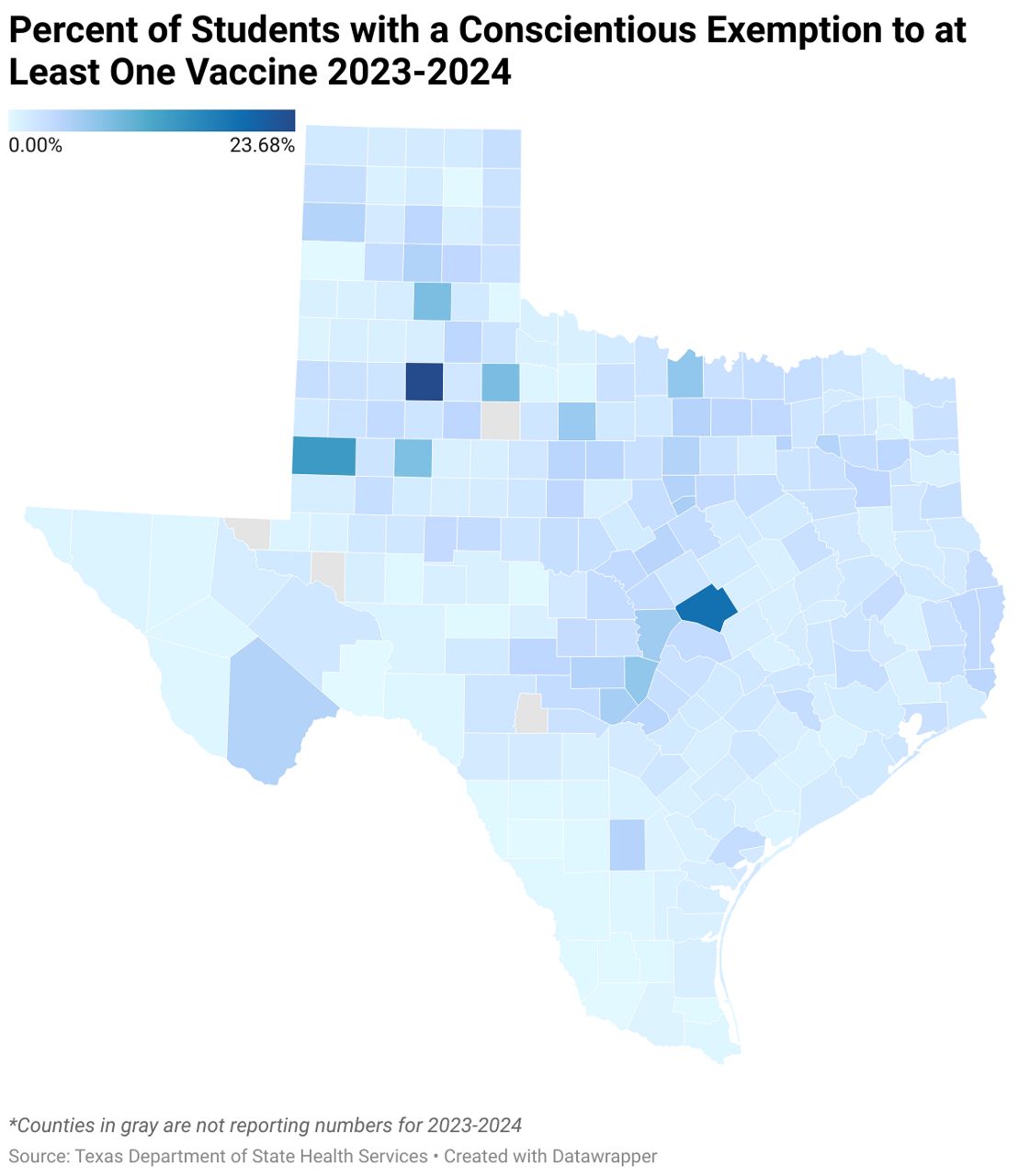A worsening measles outbreak has taken root
in Texas, sickening two dozen and hospitalizing nine on the western edge of the state, where childhood vaccination rates have dwindled in recent years. As of Tuesday, 22 children and two adults had been infected, all of whom were unvaccinated, local health officials said. The outbreak comes as Robert F. Kennedy Jr., a staunch critic of childhood vaccines, has been nominated to be the country's next health secretary, causing public health experts to worry that similar upticks of preventable illnesses will become more frequent. “There's a feeling this is going to be more and more common,” said Dr. Cameron Wolfe, an infectious disease expert at Duke University.The Texas outbreak has so far been limited to residents of Gaines County, which borders New Mexico and has roughly 20,000 residents. Last year 82 percent of kindergarten students received the measles, mumps and rubella vaccine, according to state data. That figure is roughly 10 percentage points lower than the average vaccination rate in Texas public schools and far below the federal target of 95 percent for measles vaccination. Vaccination rates have been declining nationwide since the start of the Covid-19 pandemic in 2020 and now sit below 93 percent. An estimated 280,000 kindergartners in the United States do not have documentation of an M.M.R. vaccine, according to federal data. Texas public schools require children to have received certain vaccines, including the M.M.R. shot, but parents can apply for an exemption for “reasons of conscience,” including religious beliefs. Last year, more than 13 percent of K-12 students in Gaines County received a vaccine exemption, according to state health department data. That is one of the highest exemption rates in the state.
Lara Anton, a spokeswoman for the Texas Department of State Health Services, said that the cases had been concentrated in a “more insular” community in the county, among people who attend church and private schools together. Many of the children are also home-schooled, Ms. Anton said. Local health departments have set up drive-through vaccination clinics in Seminole, a city at the center of Gaines County known for its large Mennonite community. So far, these have been well attended, Ms. Anton said. Roughly one in five unvaccinated people who become infected with measles is hospitalized, according to the Centers for Disease Control and Prevention. Ms. Anton said that all nine of the hospitalized patients were school-age children, and that many of them had spent time in the intensive care unit. “It is a serious disease,” she said. “We are trying to impress that upon the community, that you need to take steps now to protect yourself.”
State health officials warned that cases would likely pop up in surrounding communities because of the “highly contagious nature of this disease.” The New Mexico Department of Health reported this week that a teenager who lived in a county bordering Texas tested positive for measles, though the child did not have any known exposure to the Gaines County outbreak.

Article Source: The New York Times

